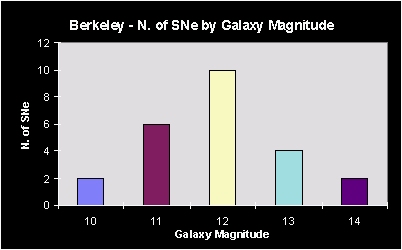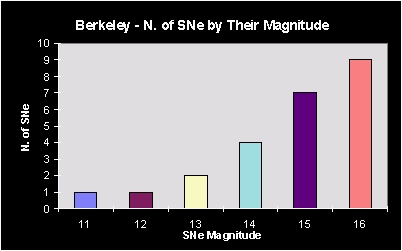|
|
In the early '90s Berkeley pioneered a highly successful
fully automated supernova search program, equipped with a large CCD
camera. Today similar programs are successfully running at Perth, Bejing and
may soon be common among amateurs.
Berkely's discoveries were made mostly on galaxies with a magn.
range of 11-13 (graph n.1) and supernovae discovered had magnitude
peaks around 15-16 (graph n.2).
CCDs are widely used today by amateurs supernovae hunters. In
1995 and 1996 most amateur discoveries were made using these devices.
Although, if not fully automated, patrolling galaxies with a CCD may be
slower than visual method, CCDs offer much deeper images and are
suitable for hunting in those galaxies just beyond the visual range (ie.,
distances over 120-150 million light years).
Graph n.1
 |
Graph n.2
 |
|
![]()